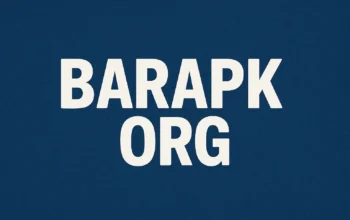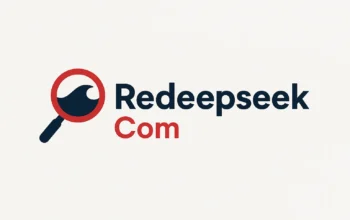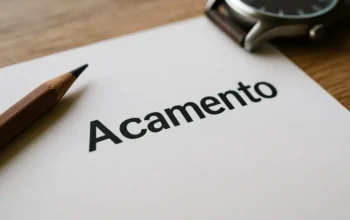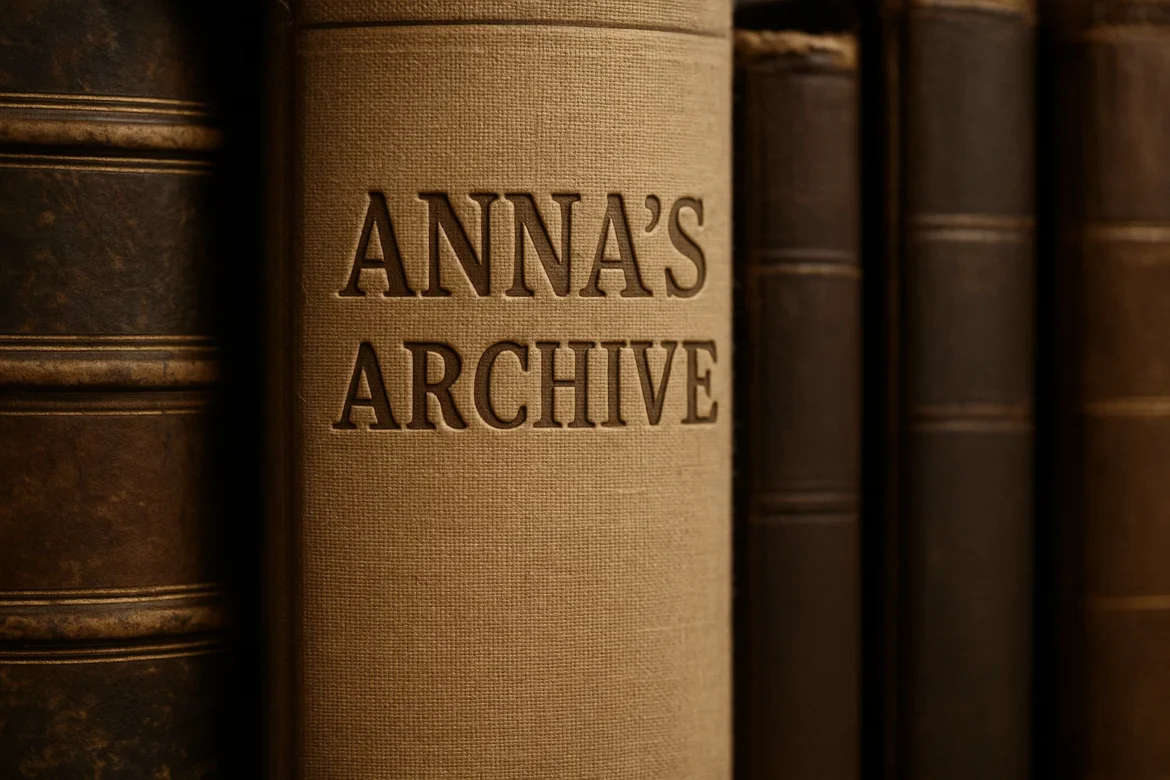
Introduction to Annas Archive
Annas Archive is a name that has gained attention across digital communities, especially among readers, researchers, and information seekers. It is not just another digital library, but a large-scale repository that seeks to preserve, share, and democratize access to knowledge. With its controversial yet ambitious mission, Annas Archive aims to provide free access to books, academic papers, and other forms of digital content that would otherwise be hidden behind paywalls or lost due to censorship. This ambitious project touches on important themes of knowledge sharing, intellectual freedom, and digital preservation.
The Origins of Anna Archive
The creation of Annas Archive can be traced back to the ethos of open knowledge movements. It was inspired by a belief that knowledge should not be locked behind paywalls or limited to specific institutions. Anna Archive is often linked to the legacy of earlier online repositories such as Library Genesis (LibGen) and Sci-Hub. These platforms paved the way for the free-sharing movement by providing academic articles and books without traditional restrictions. Anna Archive emerged as a successor, consolidating scattered archives and expanding the scope to include even more digital content.
The Mission and Philosophy
The philosophy behind Anna Archive revolves around accessibility. Knowledge, in the view of its creators, is a public good that should be freely available to anyone, anywhere. Many people across the globe cannot afford expensive textbooks or subscriptions to academic journals, which creates a gap between the privileged and the underprivileged. Anna Archive attempts to bridge this gap by making information available at no cost. Beyond accessibility, the project also emphasizes preservation. Digital data can be fragile, and books or research papers can disappear if not carefully archived. Anna Archive, therefore, serves as a long-term preservation effort in addition to being a knowledge-sharing hub.
How Anna Archive Works
Annas Archive is essentially a large-scale digital database. It gathers data from multiple sources, including mirrors of existing shadow libraries, and organizes them in a way that makes it searchable for users. The interface allows individuals to look for specific books, academic works, or other digital content. When a user searches, the platform directs them to files hosted across various mirrors, ensuring availability even if one source goes offline. This distributed system increases the resilience of the archive. Importantly, the platform does not host everything directly but acts as an index that connects users with copies stored elsewhere.
The Connection to Shadow Libraries
Shadow libraries are unofficial online repositories that provide free access to copyrighted works without authorization from publishers or authors. While controversial, they are central to the idea of open access. Annas Archive openly connects itself with this tradition, consolidating different shadow libraries and presenting them under a unified platform. This aggregation model makes it easier for users to find resources that were previously scattered across various sites. However, this also places Annas Archive under legal and ethical scrutiny, as it operates outside traditional copyright frameworks.
Ethical Debates Around Annas Archive
The rise of Annas Archive has sparked debates about ethics and legality. On one hand, supporters argue that access to knowledge should not be restricted by financial barriers. Millions of students and researchers worldwide benefit from resources that they would otherwise be unable to access. On the other hand, critics highlight that authors, publishers, and academic institutions lose revenue when their works are distributed for free. This raises concerns about sustainability in the publishing industry. The ethical debate, therefore, hinges on whether knowledge should be treated as a commercial product or as a universal human right.
Impact on Students and Researchers
One of the groups most positively impacted by Annas Archive is students. For many, particularly in developing countries, purchasing academic textbooks is financially impossible. Annas Archive provides access to materials that can be crucial for completing studies or research projects. Researchers also benefit by gaining access to scholarly journals and papers that are otherwise locked behind costly paywalls. This wider accessibility can contribute to global knowledge sharing, reduce inequality, and accelerate scientific progress. While some institutions criticize the platform, many individuals quietly acknowledge the positive role it plays in democratizing education.
Criticism from Publishers and Authors
Publishers and authors often express frustration with platforms like Annas Archive. Their primary argument is that copyright exists to protect intellectual property and ensure creators receive fair compensation for their work. By bypassing these protections, shadow libraries undermine the financial foundation of the publishing industry. Smaller authors, in particular, may struggle to sustain their livelihoods if their works are freely distributed without permission. Critics argue that while free access is desirable, it should be achieved through legal reforms and alternative publishing models rather than unauthorized sharing.
The Role of Preservation
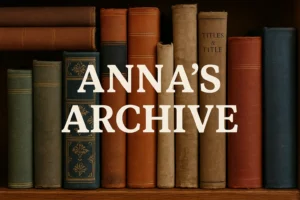 A less controversial but equally important mission of Annas Archive is preservation. Digital content is more fragile than it may seem. Servers go offline, domains expire, and content can disappear overnight. Annas Archive addresses this issue by creating redundant copies of digital works across multiple locations. This redundancy ensures that even if a specific source is taken down, the material remains available elsewhere. Preservation is particularly valuable for rare, niche, or out-of-print works that might otherwise vanish from public access entirely. In this sense, Annas Archive functions not only as a shadow library but also as a historical safeguard.
A less controversial but equally important mission of Annas Archive is preservation. Digital content is more fragile than it may seem. Servers go offline, domains expire, and content can disappear overnight. Annas Archive addresses this issue by creating redundant copies of digital works across multiple locations. This redundancy ensures that even if a specific source is taken down, the material remains available elsewhere. Preservation is particularly valuable for rare, niche, or out-of-print works that might otherwise vanish from public access entirely. In this sense, Annas Archive functions not only as a shadow library but also as a historical safeguard.
The Technological Foundation
Behind the scenes, Annas Archive relies on advanced technology to function effectively. It uses web scraping, database management, and distributed hosting systems to collect and organize massive amounts of data. Its design emphasizes resilience against takedowns by mirroring content across multiple servers. This distributed model makes it challenging for authorities or copyright holders to eliminate the archive completely. Furthermore, search algorithms and indexing processes help users find what they are looking for quickly, even within a vast digital repository.
Challenges Faced by Annas Archive
Despite its resilience, Annas Archive faces several challenges. Legal pressures from publishers and copyright enforcers remain a constant threat. Websites linked to shadow libraries are often taken down, blocked in certain regions, or forced to migrate to new domains. Additionally, maintaining such a massive archive requires significant technical resources, from server space to bandwidth. Funding is another challenge, as the platform does not operate like a traditional business. Instead, it relies on donations and community support to sustain itself. Security threats, including cyberattacks, also pose risks to its long-term survival.
The Global Reach of Annas Archive
Annas Archive is not limited to a single region; it serves users from around the world. Its multilingual support and wide range of content appeal to people across different countries and cultures. For students in underfunded educational systems, this global reach is life-changing. The platform has also drawn attention from international media, further amplifying its impact. While it is difficult to measure the exact size of its user base, anecdotal evidence suggests that millions of people have benefited from the resources Annas Archive provides.
Legal Battles and Restrictions
Like other shadow libraries, Annas Archive is no stranger to legal battles. Governments and organizations have attempted to restrict access by blocking domains or issuing takedown notices. However, because the platform does not directly host content but rather indexes it, enforcing such restrictions is complicated. The use of mirror sites and alternative domains helps it survive these crackdowns. Nonetheless, the constant legal pressure makes its future uncertain. The project operates in a legal gray area, walking a fine line between preservation and piracy.
The Future of Annas Archive
Looking ahead, the future of Annas Archive is both promising and uncertain. On the one hand, demand for free access to knowledge will likely continue to grow, fueling its relevance. On the other hand, legal and technical challenges may intensify as publishers and governments strengthen enforcement efforts. One possible future is increased decentralization, where the archive’s data is distributed across peer-to-peer networks that are harder to regulate. Another possibility is the development of legitimate open-access initiatives inspired by Annas Archive but operating within legal frameworks. Either way, the project has already left a significant mark on the digital knowledge landscape.
Comparisons with Other Digital Libraries
Annas Archive can be compared with both legitimate and shadow digital libraries. Unlike platforms such as Project Gutenberg, which focus on public domain works, Annas Archive provides access to copyrighted material as well. Compared to Sci-Hub or LibGen, Annas Archive is more comprehensive because it consolidates multiple repositories under a single index. This makes it unique in scale and scope. However, its reliance on unauthorized content separates it from officially recognized digital libraries, positioning it within a controversial yet impactful niche.
Community Involvement and Support
The success of Annas Archive depends heavily on community support. Users contribute by donating, creating mirror sites, and spreading awareness. This decentralized support base makes the archive more resilient to external pressures. Forums, social media, and online discussions often feature debates and guides on how to access and use Annas Archive. This community-driven approach mirrors the collaborative spirit of open-source projects, where volunteers and enthusiasts sustain a common goal. Without such involvement, the platform would struggle to survive in the face of constant challenges.
Cultural and Social Implications
Beyond its practical utility, Annas Archive has cultural significance. It represents resistance to monopolies in knowledge distribution and embodies the idea of knowledge as a shared resource. In some ways, it is a digital continuation of historic movements advocating for public libraries and universal education. By providing unrestricted access, it challenges traditional models of publishing and information control. However, it also sparks questions about the value of intellectual labor and the balance between access and compensation. These cultural debates ensure that Annas Archive remains more than just a website—it becomes a symbol of larger societal struggles over information.
Conclusion
Annas Archive is not without controversy, but its influence is undeniable. It offers millions of people access to knowledge they would otherwise lack, bridging gaps in education, research, and cultural access. At the same time, it raises ethical and legal challenges that cannot be ignored. The project highlights the tension between open access and copyright, between preservation and piracy, between global demand and institutional control. Whether one views Annas Archive as a digital Robin Hood or as a disruptive pirate, it is clear that it has reshaped the conversation around knowledge in the digital age. As the debate continues, the platform remains a vital, if contentious, player in the global effort to preserve and share human knowledge.
Also Read: Adsy.pw/hb3
